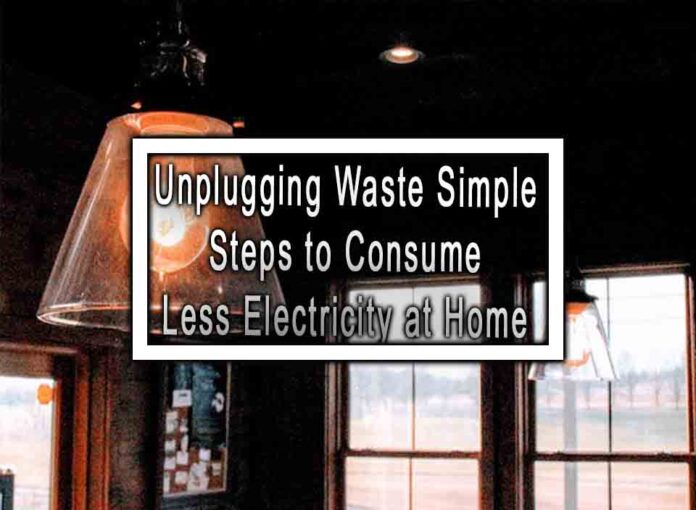Consuming less electricity at home is not only beneficial for the environment but also helps you save money on your utility bills. Here are some simple steps you can take to reduce your electricity consumption:
1. Switch to energy-efficient appliances
Replace old, energy-guzzling appliances with newer, energy-efficient models. Look for appliances with the Energy Star label, as they are designed to consume less electricity while providing the same level of performance.

2. Use LED light bulbs
LED bulbs are more energy-efficient compared to traditional incandescent bulbs. They consume less electricity and last much longer. Replace your incandescent bulbs with LED bulbs throughout your home to reduce energy consumption for lighting.
3. Unplug electronics when not in use
Many electronic devices and appliances continue to consume electricity even when they are turned off but still plugged in. This is known as “phantom power” or “standby power.” Unplug devices such as televisions, computers, game consoles, and phone chargers when you’re not using them, or use power strips with switches to easily turn off multiple devices at once.
4. Optimize heating and cooling
Heating and cooling systems account for a significant portion of home energy consumption. Set your thermostat to an energy-efficient temperature range, and consider using programmable thermostats that automatically adjust the temperature based on your schedule. Also, properly insulate your home to prevent heat loss in winter and heat gain in summer.
5. Air dry clothes
Instead of using a clothes dryer, opt for air-drying your laundry whenever possible. Hang clothes outside on a clothesline or use indoor drying racks. Clothes dryers consume a considerable amount of electricity, so reducing their use can lead to significant energy savings.
6. Reduce water heating energy
Water heating can be a major source of energy consumption. Lower the temperature of your water heater to around 120 degrees Fahrenheit (49 degrees Celsius), which is sufficient for most household needs. Additionally, insulate your water heater and the hot water pipes to minimize heat loss.
7. Be mindful of lighting usage
Develop the habit of turning off lights when you leave a room. Make use of natural light during the day by opening curtains and blinds. Install motion sensors or timers for outdoor lighting to ensure they are only active when needed.
8. Use power-saving settings
Enable power-saving features on your electronic devices, such as computers, laptops, and smartphones. These settings can help reduce energy consumption by optimizing performance and automatically turning off or dimming the screen when not in use.
9. Cook efficiently
When using the oven, try to cook multiple dishes at once to maximize energy efficiency. Use lids on pots and pans to retain heat and reduce cooking time. Consider using smaller appliances like toaster ovens or microwaves for smaller meals, as they consume less energy than a full-size oven.
10. Educate and involve your family
Teach your family members about the importance of conserving electricity and involve them in adopting energy-saving habits. Encourage everyone to turn off lights and unplug devices when not in use, and make it a collective effort to reduce electricity consumption.
By following these simple steps, you can significantly reduce your electricity consumption at home and contribute to a more sustainable future.










